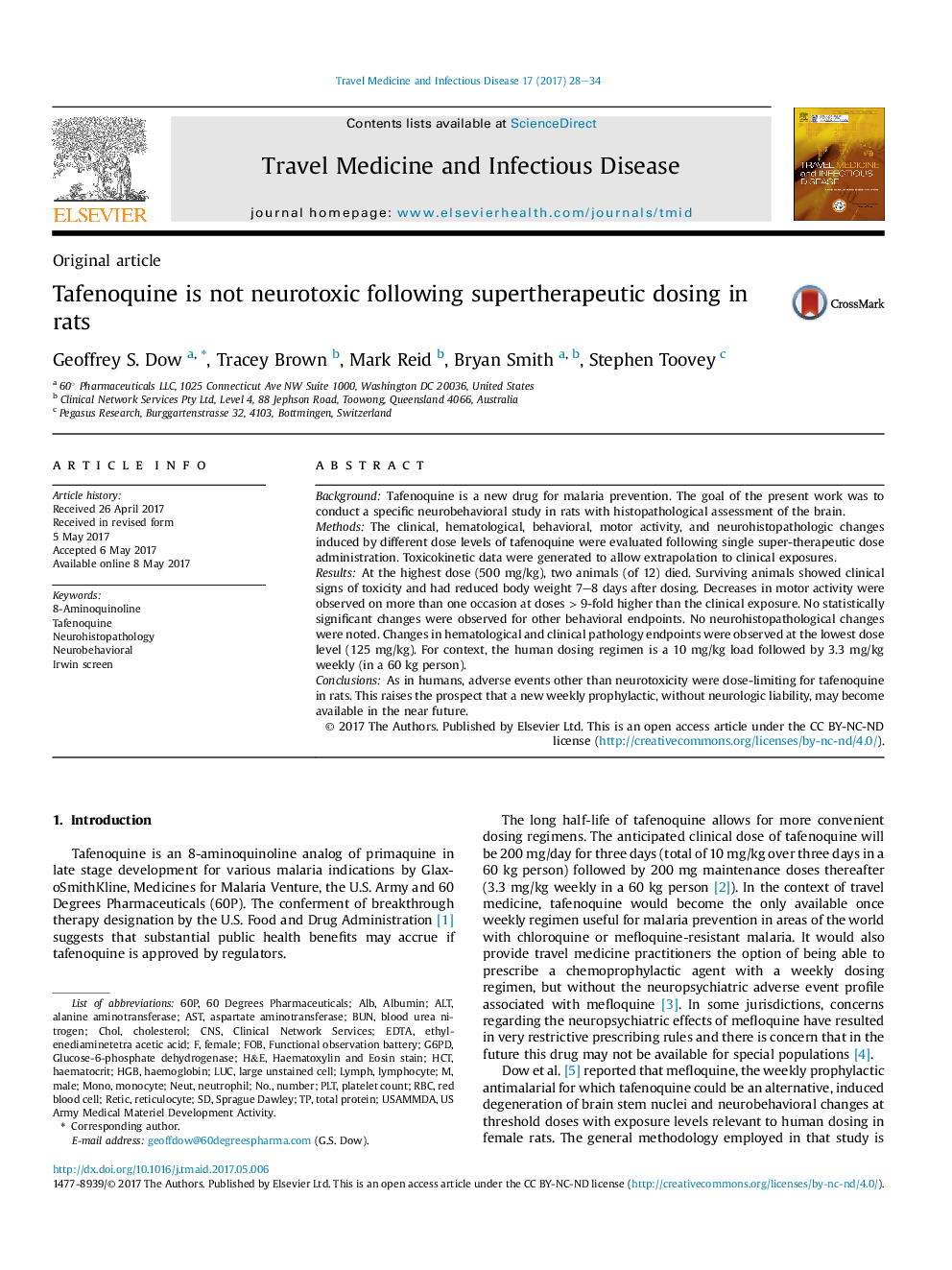| Article ID | Journal | Published Year | Pages | File Type |
|---|---|---|---|---|
| 5670655 | Travel Medicine and Infectious Disease | 2017 | 7 Pages |
BackgroundTafenoquine is a new drug for malaria prevention. The goal of the present work was to conduct a specific neurobehavioral study in rats with histopathological assessment of the brain.MethodsThe clinical, hematological, behavioral, motor activity, and neurohistopathologic changes induced by different dose levels of tafenoquine were evaluated following single super-therapeutic dose administration. Toxicokinetic data were generated to allow extrapolation to clinical exposures.ResultsAt the highest dose (500Â mg/kg), two animals (of 12) died. Surviving animals showed clinical signs of toxicity and had reduced body weight 7-8 days after dosing. Decreases in motor activity were observed on more than one occasion at doses > 9-fold higher than the clinical exposure. No statistically significant changes were observed for other behavioral endpoints. No neurohistopathological changes were noted. Changes in hematological and clinical pathology endpoints were observed at the lowest dose level (125Â mg/kg). For context, the human dosing regimen is a 10Â mg/kg load followed by 3.3Â mg/kg weekly (in a 60Â kg person).ConclusionsAs in humans, adverse events other than neurotoxicity were dose-limiting for tafenoquine in rats. This raises the prospect that a new weekly prophylactic, without neurologic liability, may become available in the near future.
